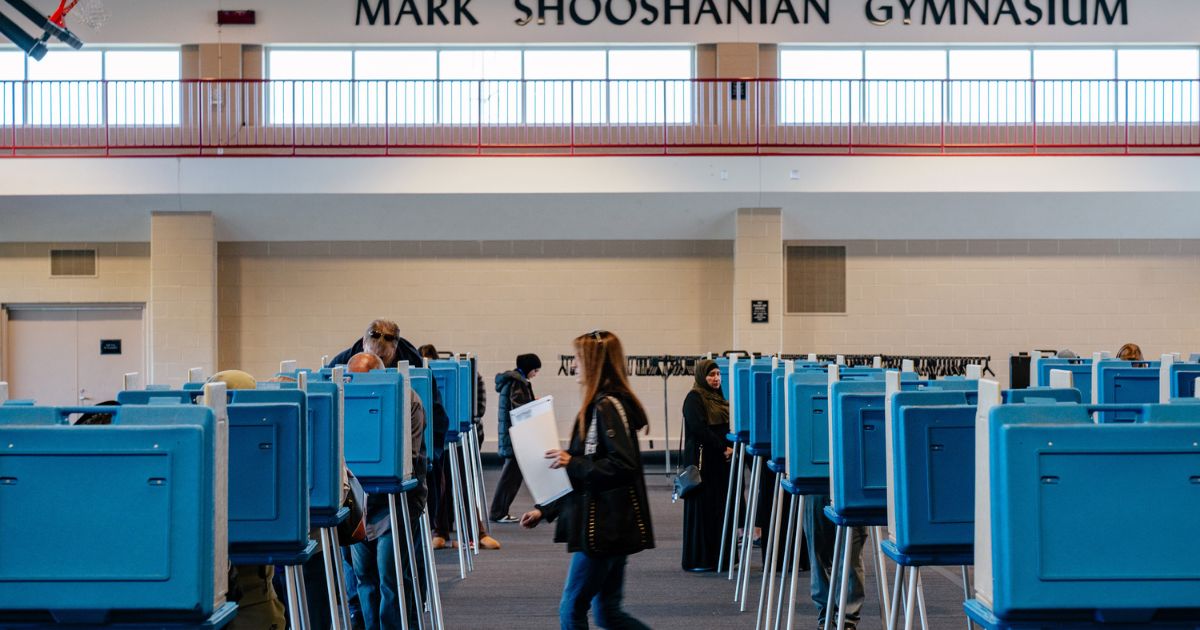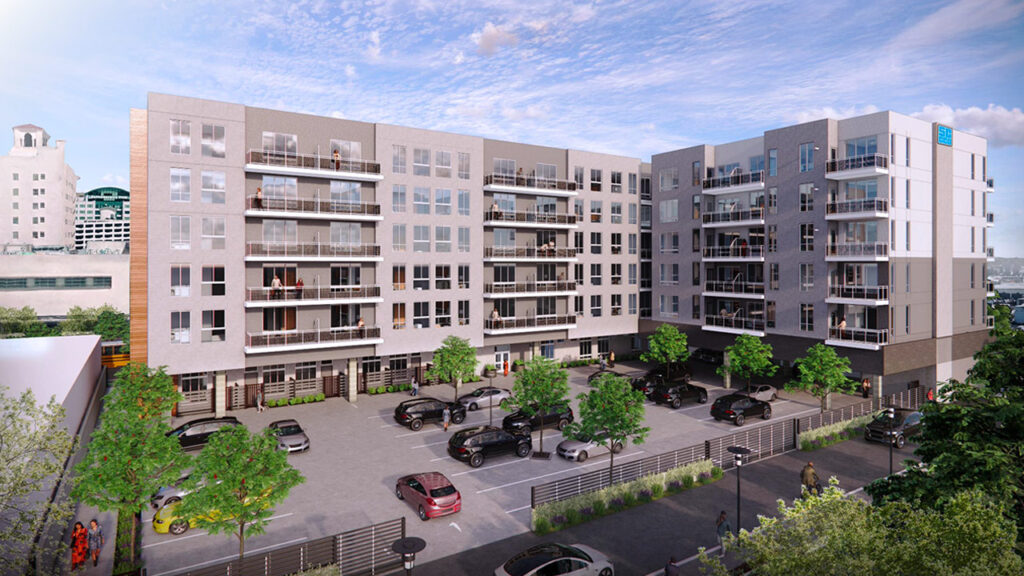Residents vote early in Dearborn, Mich., Nov. 3, 2024. While the nation awaits statewide results after the polls close on Election Day, a number of counties could provide hints on where the race is headed. (Nick Hagen/The New York Times)

- Counties with distinct demographics may provide clues to whether Harris or Trump will gain momentum.
- Key demographic trends include working-class whites, Black voters, and suburban women.
- Youth turnout in Dane County and rural support in Peach County may influence overall results.
Share
|
Getting your Trinity Audio player ready...
|
When the polls close Tuesday, we will be watching, of course, for statewide outcomes in the presidential battlegrounds. But as we wait for calls, there will be individual counties you can look to for clues — though not definitive ones — to the contours of the vote.
Here are some counties whose results may speak to whether different demographic groups are trending toward Vice President Kamala Harris or former President Donald Trump.
— Working-Class White Voters
Macomb County, Michigan
Macomb County, a stretch of suburbs and exurbs north of Detroit, is home to large numbers of the working-class white voters who broke the so-called Blue Wall in 2016, flipping Michigan, Pennsylvania and Wisconsin to Republicans for the first time in more than a quarter-century and winning Trump the presidency.
Four years later, just enough of them returned to vote Democratic, helping Joe Biden flip those states back. How those voters break this year could be decisive again.
In 2020, Trump won 53.4% of the vote in Macomb County, so if his total is exceeding that Tuesday, it would be a good sign for the former president.
— College-Educated Suburban Voters
Chester County, Pennsylvania
Chester County, an affluent area west of Philadelphia, is filled with the sort of highly educated suburban voters who have shifted toward voting for Democrats since 2016, one of the more electorally significant realignments of the Trump era.
Educated suburban voters, especially women, helped fuel Democratic victories in 2018, 2020 and 2022. Abortion has been a motivating issue for suburban women, and if we see a big “Dobbs effect” of backlash to the overturning of Roe v. Wade, this is one place where it could be visible.
In 2020, Biden won 57.8% of the vote in Chester County. The Harris campaign is hoping for a similar result.
— Black Voters
Fulton County, Georgia
Black voters are a powerful bloc in Fulton County, home to Atlanta, and Trump has been trying to cut into the Democrats’ advantage there.
Democrats have historically relied on huge margins in heavily Black metropolitan areas in order to win states that, on a traditional results map, appear mostly red because of strong Republican support in geographically large but less populated areas. This was a big part of what enabled Biden to win Georgia, Michigan, Pennsylvania and Wisconsin.
In 2020, Biden won 72.6% of the vote in Fulton County. Harris, who has underperformed Biden’s support with Black voters, according to polls, would need major turnout here again.
— Latino voters
Yuma County, Arizona
Yuma County, in the southwestern corner of Arizona along the border with Mexico, is about two-thirds Latino and has been at the center of debates over the effects of illegal immigration. How it votes will offer some indication of how Latino voters are weighing that issue, though it’s important to note that there is also a sizable minority of white working-class voters here.
Another word of caution: It’s tough to identify bellwethers for Latino voters at large, in part because Latinos are so diverse. Cuban Americans in Florida, for instance, are politically distinct from Mexican Americans in Arizona.
In 2020, Trump won 52.2% of the vote in Yuma County. That was a greater share than the 48.1% he had notched there in 2016, and his campaign is hoping to extend that momentum.
— Arab American voters
Wayne County, Michigan
Wayne County is home to Detroit, a heavily Black city, but it’s also home to Dearborn, a majority-Arab suburb that has been an epicenter of anger at the Biden administration’s and Harris campaign’s support for Israel in its war against Hamas.
Many voters here have historically backed Democrats but are disillusioned with Harris because she says she would continue to provide weapons to Israel. Some have said they will reluctantly vote for her anyway, but others plan to vote for Trump or a third-party candidate, or not to vote at all. Victory margins and turnout numbers will both be significant.
In 2020, Biden won 68.4% of the vote in Wayne County. The Harris camp is hoping that it can keep the county blue despite the tension over Middle East policy.
— Jewish Voters
Montgomery County, Pennsylvania
Montgomery County is home to significant Jewish populations, particularly in Lower Merion Township, west of Philadelphia. It is an imperfect bellwether — no county is majority Jewish, and many places with the largest Jewish minorities, like New York City, aren’t in battleground states — but it will help show another piece of the electoral impact of Israel’s war in the Gaza Strip.
Trump has been trying to woo Jewish voters, saying his support of Israel would be uncompromising compared with that of Harris, who has sometimes criticized it. In doing so, though, he has often used antisemitic tropes.
In 2020, Biden won 62.6% of the vote in Montgomery County. Both the Harris and Trump campaigns see Pennsylvania as crucial to securing victory, so a win in the county would be a hopeful sign.
— Young Voters
Dane County, Wisconsin
Dane County is home to the University of Wisconsin-Madison, and like other counties with large college campuses, it will point to trends among young people, including first-time voters.
Young voters have historically been an important constituency for Democrats, and Harris has drawn more enthusiasm from them than Biden was drawing earlier this year. But there are still questions surrounding her support, especially because of Israel, and there is evidence of a growing gender gap caused by young men moving to the right.
In 2020, Biden won 75.5% of the vote in Dane County. The Harris campaign is hoping that a win here would signal that its strategy of targeting younger voters is paying off.
— Rural Voters
Peach County, Georgia
It’s hard to choose one bellwether county for rural voters because they are spread across such a vast number of counties, most of which are heavily Republican.
But one option is Peach County, a swath of central Georgia that — unlike most rural counties — is closely split between white and Black voters. It has swung back and forth between Republicans and Democrats in past elections.
In 2020, Trump won 51.8% of the vote in Peach County. A strong pro-Trump turnout here would be a sign that his campaign’s bet on rural voters could tip the state back in his favor.
–
This article originally appeared in The New York Times.
By Maggie Astor and Nate Cohn/Nick Hagen
c. 2024 The New York Times Company




















